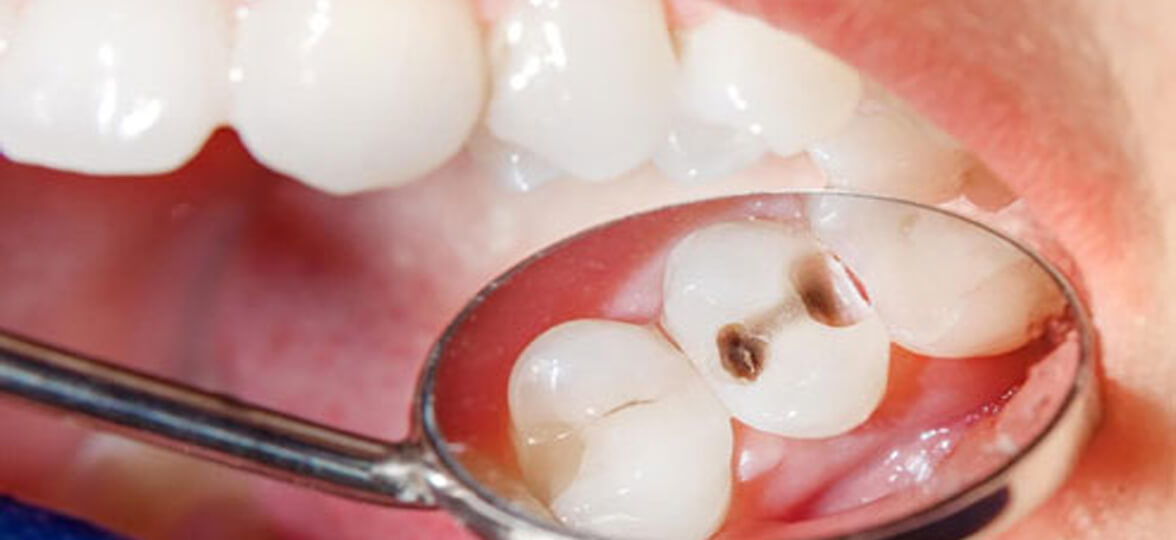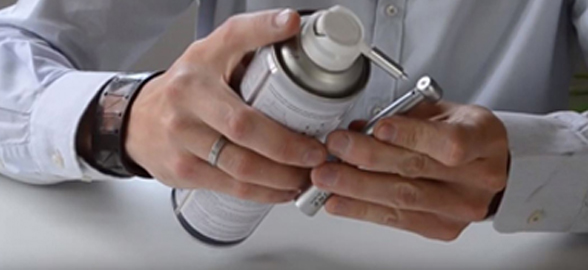Endodontics, as a dental specialty, has evolved thanks to advances in materials and techniques that seek to improve precision, effectiveness and long-term results. One of the greatest developments in this field has been the introduction of MTA cement (Mineral Trioxide Aggregate), a material that has revolutionized repair and sealing procedures in root systems.
Since its appearance in the 1990s, it has become a benchmark for its unique combination of physical-chemical and biological properties. This bioceramic material stands out for its ability to adapt to different clinical scenarios, from sealing perforations and apical obturation, to its use in regenerative therapies. Furthermore, its biocompatibility and regeneration properties position it as a versatile and reliable solution even in complex cases.
However, due to the wide range of materials available on the market, choosing the most suitable product for each case can be a challenge. In this article, we will explore everything you need to know about MTA cement: what sets it apart from other materials such as traditional sealing cements, what its key properties are, the main clinical applications, as well as its advantages and limitations. All with the aim of helping you make informed decisions and optimize your endodontic treatments.

What is MTA cement?
MTA cement is a bioceramic material composed mainly of oxides and silicates that react with water to set and form a watertight barrier. Its unique formulation and innovative properties make it stand out as one of the most widely used materials in advanced endodontics.
In this section, we will explore its composition, physico-chemical and biological properties, as well as compare it with traditional sealant cements.
Composition and properties of MTA cement
MTA is a powder composed of fine hydrophilic particles that set in the presence of moisture. Its main components include:
- Tricalcium silicate.
- Dicalcium silicate.
- Tricalcium aluminate
- Ferric tetracalcium aluminate.
- Bismuth oxide (which provides radiopacity).
- Calcium sulphate dihydrate (as a setting time regulator).
These substances give MTA a unique combination of physical-chemical and biological properties that distinguish it from other endodontic materials.
Physical-chemical properties
MTA stands out for its specific characteristics that make it highly functional in clinical procedures:
- Setting time: Varies between 3 and 4 hours, although some modern versions have reduced this time.
- pH: Highly alkaline (12.5), which gives it antimicrobial properties.
- Compressive strength: Relatively low, which may limit its use in functional areas subject to high loads.
- Solubility: Very low, which guarantees prolonged action and durability of the seal.
- Radiopacity: Higher than dentine, facilitating radiographic follow-up.
Biological properties
In addition to its physical-chemical properties, MTA offers important biological benefits that make it a material of choice in endodontic treatments:
- Biocompatibility: Excellent, as it interacts favorably with dental and periodontal tissues, promoting the formation of bone and cement.
- Antibacterial effect: Its high pH generates a hostile environment for bacteria, favoring the elimination of microorganisms in cases of infection.
- Sealing capacity: Thanks to its consistency and stability, it effectively prevents bacterial microfiltration.
- Tissue regeneration: Stimulates the formation of hard tissue and facilitates the regeneration of the periodontal ligament.
Differences between MTA cement and endodontic sealing cements
Although MTA cement and endodontic sealing cements share certain objectives, such as ensuring an effective seal, there are key differences that determine their clinical use:
- Chemical composition: MTA is composed of tricalcium silicate particles, dicalcium silicate particles, and oxides (such as bismuth oxide for radiopacity), making it more robust and suitable for repair and regeneration procedures. Endodontic sealing cements are primarily designed to fill spaces between gutta-percha and dentinal walls. Its composition varies between resins, zinc oxides and eugenol, bioceramics or silicones, depending on the type of sealant.
- Main uses: MTA is more versatile and is used in specific cases, such as root perforations, apex formation or apex sealing in endodontic retreatment. Sealing cements are auxiliary materials used for conventional obturation of the root canal system in combination with gutta-percha.
- Setting time: MTA has a longer setting time (3 to 4 hours), while many sealants have a faster setting, making them ideal for procedures where immediate obturation is sought.
- Biological properties: MTA is highly biocompatible and promotes the formation of hard tissue and tissue regeneration, as well as having antimicrobial properties thanks to its alkaline pH. Sealing cements, although some are also biocompatible, do not usually promote tissue regeneration. Their main function is to create a watertight barrier against bacterial infiltration.
In summary, although both materials serve sealing functions, MTA is a specialized material for more complex cases requiring biocompatibility and tissue regeneration, while endodontic sealants are a standard option for obturation in conventional procedures.
Applications and practical tips for MTA cements
MTA cement is renowned for its versatility in complex endodontic procedures and its ability to adapt to different clinical scenarios. Thanks to its unique properties, it is used both in conventional treatments and in cases where other materials fail. Here are its most relevant applications and some practical tips to ensure optimal results.
Clinical applications of MTA cement
- Filling of root perforations: Root perforations, whether accidental or pathological, represent a major clinical challenge. MTA, due to its hermetic sealing capacity and biocompatibility, allows these perforations to be sealed effectively, promoting tissue regeneration and minimizing complications.
- Apex formation in immature teeth: In young teeth with open or immature apices, MTA acts as an apical barrier that stimulates the formation of hard tissue, allowing apical closure and ensuring the stability of the treatment.
- Repair of root fractures and dental resorptions: Horizontal root fractures or external and internal resorptions can be treated with MTA, due to its ability to seal and promote healing of the tissues involved.
- Apical closure in endodontic retreatments: In cases where previous treatments have failed, MTA is an excellent option for apical sealing. Its ability to prevent bacterial microleakage reduces the risk of reinfection.
- Pulpotomies and pulp capping: In pulp preservation procedures, such as direct or indirect capping, MTA protects the exposed pulp and stimulates the formation of reparative dentin, ensuring long-term pulp viability.
Practical Tips for Using MTA Cement
To get the best results, it is essential to know how to handle and apply MTA cement properly. Here are some useful tips:
- Material Preparation: Strictly follow the manufacturer's instructions to achieve a homogeneous mixture. Use distilled water or recommended solutions to ensure proper hydration of the material.
- Instrument Selection: Use microapplicators, spatulas or condensers specifically designed for handling MTA. These facilitate their placement in hard-to-reach areas, such as perforations or apices.
- Isolation of the operating field: Although MTA is capable of setting in the presence of moisture, effective isolation improves the quality of the result and reduces the risk of bacterial contamination.
- Optimization of setting time: Plan the procedure considering the setting time of the MTA (3-4 hours). If time is limited, opt for commercially available fast-setting versions.
- Radiographic verification: After placement, use x-rays to confirm proper placement of the material and ensure proper sealing.

Advantages and disadvantages of MTA cement
MTA cement has established itself as one of the most effective materials in endodontics thanks to its unique properties. However, like any material, it also has limitations that must be taken into account. Here is a detailed analysis of its advantages and disadvantages.
Advantages of MTA cement
- Exceptional biocompatibility: Its chemical composition allows for a favorable interaction with dental and periodontal tissues, stimulating the formation of bone, root cementum and periodontal ligament.
- Sealing capacity: It provides a hermetic seal that prevents bacterial microleakage, key to the success of treatments such as perforation repair and apical closure.
- Moisture resistance: Unlike other materials, MTA can set in the presence of moisture, making it ideal for procedures in complex or exudative surgical areas.
- Antimicrobial properties: Its high pH generates an alkaline environment that inhibits bacterial growth and favors the disinfection of affected tissues.
- Stimulation of tissue regeneration: It promotes the formation of hard tissue and facilitates the regeneration of the periodontal ligament, making it an ideal option for regenerative therapies.
Disadvantages of MTA cement
- High cost: Compared to other materials, MTA is considerably more expensive, which can limit its use in routine procedures.
- Complex handling: Its consistency and setting time make it difficult to handle, especially for professionals without previous experience with this material.
- Limited compressive strength: Its low resistance to masticatory forces restricts its use in functional areas subjected to high loads.
- Risk of tooth staining: In its traditional version (gray MTA), it can cause staining in anterior teeth, which limits its use in cases where aesthetics are a priority.
- Long setting time: Although modern fast-setting versions exist, traditional MTA requires between 3 and 4 hours to set completely, which can be inconvenient in some clinical procedures.
Check out the best-selling MTA cements:
MTA cement has marked a turning point in the field of endodontics, establishing itself as a key material in repair, regeneration and sealing treatments. Its excellent biocompatibility, antimicrobial capacity and sealing properties make it an essential tool for managing complex cases and guaranteeing long-term clinical success.
Despite its limitations, such as its high cost and more demanding handling, it offers unique benefits that position it as a preferred option over other conventional materials. In particular, its ability to stimulate tissue regeneration makes it ideal for procedures that not only seek to restore, but also promote healing and recovery of affected tissues.
We understand the importance of having high quality materials for your treatments. That's why we offer you a wide variety of MTA cements from the best brands, designed to fit your clinical needs. Don't hesitate to explore our catalogue and take the next step towards excellence in your endodontic procedures.
We hope this post has been useful, to keep you updated, follow us on our social networks where we will share with you more articles, useful information, offers and promotions in the dental sector, we are waiting for you!





